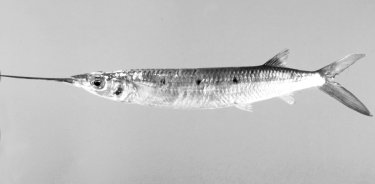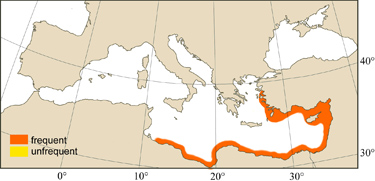
|
Relevant synonyms
Misidentification
Meristic formula
|
|
| photo : David Darom |
|
SHORT
DESCRIPTION
color :
back bluish grey with silvery white belly. A series of 3-9 (usually 4-6) black spots (often hardly visible)* along the flanks. Upper caudal fin yellow. Tip of lower jaw red. size : common 10-30 cm (max. 40 cm). * Note : in the Mediterranean population the blackish spots that are commonly used to distinguish H. far from closely related species, are often faded or completely absent. |
DISTINGUISHING CHARACTERISTICS
BIOLOGY / ECOLOGY
habitat :
epipelagic, inshore. |
|
1st
MEDITERRANEAN RECORD
|

|
|
DISTRIBUTION
|
ESTABLISHMENT SUCCESS
speculated reasons for success :
|
|
|
MODE OF
INTRODUCTION |
IMPORTANCE TO
HUMANS |
|
KEY
REFERENCES
|
 Hemiramphus marginatus
Hemiramphus marginatus